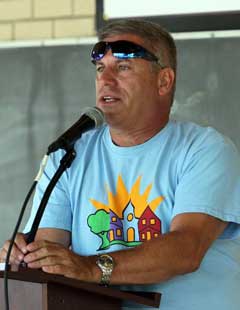 |
Home | En Español | Contact Us | A to Z |
 |
Artisan Avenue Transforms Through HOME Funds
Drug dealers and prostitutes descended upon vacant residential structures in Huntington, WV in 2002. Three years later, as crime increased and the area declined to slum conditions, four local teens were shot to death after the high school prom. United by tragedy, residents knew that something had to change. In 2008, the Fairfield community, located within the city, was designated as a Weed and Seed Strategy area, a strategic program sponsored by the U.S. Department of Justice aimed at crime prevention and community revitalization. The formerly violent, dilapidated section of the city has since been transformed thanks to HUD HOME and Community Development Block Grant (CDBG) program funds. Artisan Avenue, located in the heart of the Weed and Seed designated area, underwent significant redevelopment with the funds. Violent and drug crime in the area, which had steadily increased by over 6.5 percent per year, has been reduced by 20 percent over the last three years. Additionally, property values have increased by 70 percent, and investors have returned to the community.
On June 13, 2011, Fairfield community leaders and residents joined together for a picnic to celebrate the area’s reduced crime rate. Through HUD funds, the city has completed the acquisition of 30 parcels, the re-subdivision of the parcels into 14 lots to reduce lot density, demolition of 20 dilapidated structures, collaborated with Habitat for Humanity toward the construction of eight new homes for homeownership, completed construction on a new duplex to serve low-income families and obtained commitments from Habitat and the Housing Development Corporation to construct new housing on the remaining lots.
|
|||||
| Content Archived: January 15, 2013 | |||||



